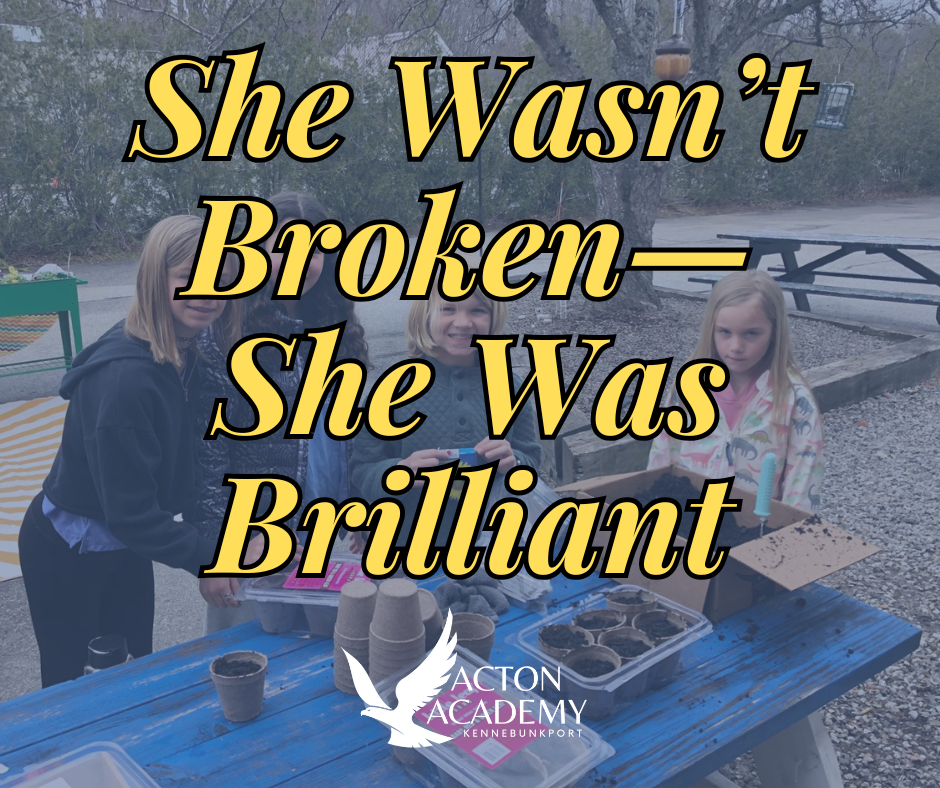Rethinking How We See and Support Creative, Kinetic Learners
When Gillian Lynne was a young child, she had trouble sitting still in school.
She fidgeted. She couldn’t focus.
Her homework was always late, and she constantly disrupted the class.
Today, Gillian would likely be referred for ADHD testing. She might be given a diagnosis and a prescription to help her “focus” and “behave.” But when she was growing up in the 1930s, that label didn’t exist. And perhaps that’s what saved her.
Instead of being told to calm down, she was seen by a specialist who made a profoundly different choice. He turned on a radio and left the room. As soon as the music started, Gillian stood up and danced.
The doctor watched through the window and turned to her mother with one powerful insight:
“She’s not sick. She’s a dancer.”
That moment changed everything.
Gillian Lynne went on to choreograph Cats, Phantom of the Opera, and some of the most iconic productions in musical theater history. She became a creative force who brought joy to millions—and it all began because one adult looked beyond the behavior and saw the brilliance.
Are We Still Missing the Gillians?
This story, shared by the late Sir Ken Robinson in his TED Talk “Do Schools Kill Creativity?”, highlights a deeper truth that still affects classrooms today:
We are too quick to pathologize difference.
A child who needs to move is often told to be still.
A child who daydreams is told to “focus.”
A child who questions everything is told to stop interrupting.
But what if the fidgeting is a sign of creativity?
What if the questions reflect deep curiosity?
What if the inability to conform is actually a gift?
In our rush to standardize, categorize, and diagnose, we risk missing the genius that doesn’t look like straight A’s or quiet compliance.
We risk labeling children as broken—when really, they are just brilliant in ways our systems aren’t built to recognize.
A New Lens for Learning
At Acton Academy, we believe every child has a unique genius—and it’s our job to help them discover it, not suppress it.
Our learners aren’t sorted by age or grades.
They’re not expected to sit still for hours or memorize for tests.
Instead, they are given space to move, create, build, debate, fail, and try again.
We believe in educating the whole child—body, mind, and spirit.
Here’s what that looks like in action:
-
Movement is welcome. We don’t punish the need to move—we make space for it.
-
Curiosity is the curriculum. Learners drive their own projects based on real interests.
-
Differences are strengths. We don’t treat learning differences as deficits.
-
Creativity is core. Art, dance, design, and entrepreneurship aren’t extras—they’re essential.
-
Socratic dialogue rules. Learners are encouraged to speak up, question boldly, and think critically.
Just like Gillian, our learners are more than test scores. They are makers, dreamers, leaders, and creators. We don’t want them to sit down and be quiet—we want them to stand up and shine.
Seeing the Child, Not Just the Behavior
Every day, in schools around the world, there are young Gillians trying to make sense of a world that doesn’t quite fit.
What they need is not more control—but more understanding.
Not more rules—but more room to grow.
They need adults who can see past the restlessness to the rhythm.
Past the struggle to the strength.
Because one caring adult who sees a child’s potential can change everything.
Want to See What This Looks Like in Action?
At Acton Kennebunkport, we’re reimagining what education can be.
Our studios are filled with movement, creativity, ownership, and purpose.
And every day, we look for the next Gillian—the learner who doesn’t need to be “fixed,” but set free.
Download our free info kit to learn how we support whole-child learning and empower kids to lead their own hero’s journey.
